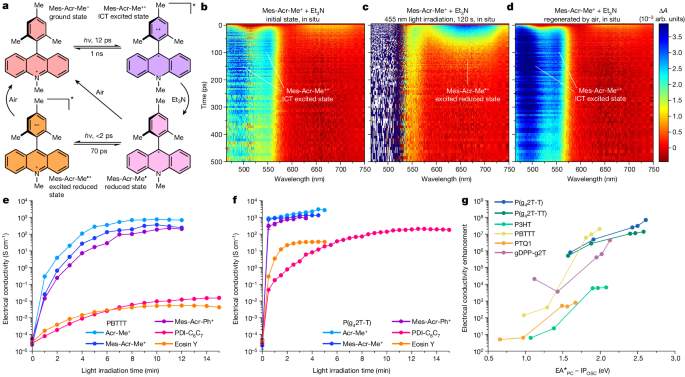Science Daily May 15, 2024
Chemical doping is an important approach to manipulating charge-carrier concentration and transport in organic semiconductors (OSCs) and it ultimately enhances device performance. However, conventional doping strategies often rely on the use of highly reactive dopants which are consumed during the doping process. Achieving efficient doping with weak and/or widely accessible dopants under mild conditions remains a considerable challenge. An international team of researchers (Sweden, Italy, South Korea, UK, Italy, USA – Georgia Institute of Technology) showed that a previously undescribed concept for the photocatalytic doping of OSCs that used air as a weak oxidant (p-dopant) and operated at room temperature. This was a general approach that could be applied to various OSCs and photocatalysts, yielding electrical conductivities that exceed 3,000 S cm–1. They demonstrated the successful photocatalytic reduction (n-doping) and simultaneous p-doping and n-doping of OSCs in which the organic salt used to maintain charge neutrality was the only chemical consumed. According to the researchers their photocatalytic doping method offers great potential for advancing OSC doping and developing next-generation organic electronic devices… read more. Open Access TECHNICAL ARTICLE

Mechanism and generality of the photocatalytic p-doping process. Credit: Nature, 15 May 2024